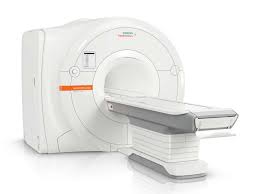3 Tesla MRI Scan Cost in Delhi
Overview
MRI scan is a technique used to diagnose and detect the diseases in the body. 3 Tesla (3T) MRI is a type of magnetic resonance imaging that uses a magnetic field with strength of 3 Tesla. 3 Tesla MRI scanners are 15 times stronger than open MRI scanners.
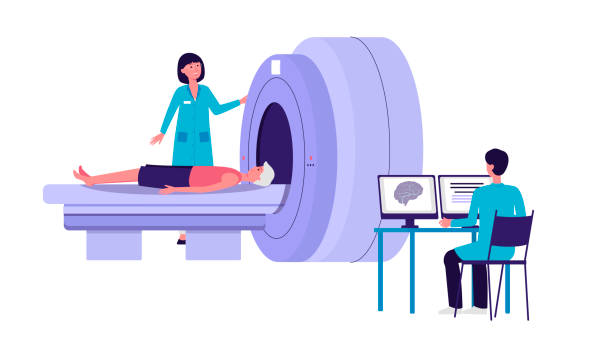
CareBox has a network of more than 60+ MRI scan centers in DELHI/NCR. You can get 50% discount on your MRI Scan in Delhi/NCR. Call us now to know more details.

3 Tesla MRI Scan Cost in Delhi3 Tesla MRI Scan
CareBox
- October 18, 2023
Products & Services
Why it's done
Ultrasound is used for many reasons, including to:
- View the uterus and ovaries during pregnancy and monitor the developing baby’s health
- Diagnose gallbladder disease
- Evaluate blood flow
- Guide a needle for biopsy or tumor treatment
- Examine a breast lump
- Check the thyroid gland
- Find genital and prostate problems
- Assess joint inflammation (synovitis)
- Evaluate metabolic bone disease
More Information
Risks
Diagnostic ultrasound is a safe procedure that uses low-power sound waves. There are no known risks.
Ultrasound is a valuable tool, but it has limitations. Sound waves don’t travel well through air or bone, so ultrasound isn’t effective at imaging body parts that have gas in them or are hidden by bone, such as the lungs or head. Ultrasound may also be unable to see objects that are located very deep in the human body. To view these areas, your health care provider may order other imaging tests, such as CT or MRI scans or X-rays.
Fill the Form For Latest Updates
How you prepare Most ultrasound exams require no preparation. However, there are a few exceptions:
- For some scans, such as a gallbladder ultrasound, your care provider may ask that you not eat or drink for a certain period of time before the exam.
- Others, such as a pelvic ultrasound, may require a full bladder. Your doctor will let you know how much water you need to drink before the exam. Do not urinate until the exam is done.
- Young children may need additional preparation. When scheduling an ultrasound for yourself or your child, ask your doctor if there are any specific instructions you’ll need to follow.
Clothing and personal items
Wear loose clothing to your ultrasound appointment. You may be asked to remove jewelry during your ultrasound, so it’s a good idea to leave any valuables at home.
What you can expect Before the procedure


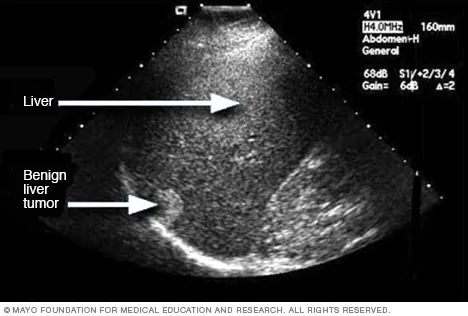
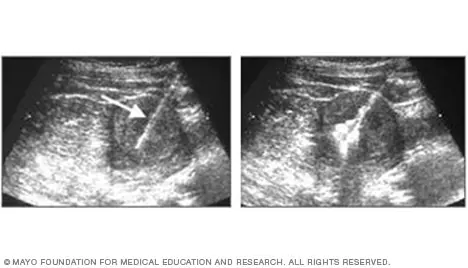
Before your ultrasound begins, you may be asked to do the following:
- Remove any jewelry from the area being examined.
- Remove or reposition some or all of your clothing.
- Change into a gown.
You’ll be asked to lie on an examination table.
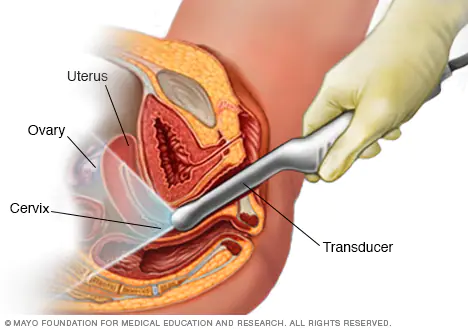
During the procedure
Gel is applied to your skin over the area being examined. It helps prevent air pockets, which can block the sound waves that create the images. This safe, water-based gel is easy to remove from skin and, if needed, clothing.
A trained technician (sonographer) presses a small, hand-held device (transducer) against the area being studied and moves it as needed to capture the images. The transducer sends sound waves into your body, collects the ones that bounce back and sends them to a computer, which creates the images.
Sometimes, ultrasounds are done inside your body. In this case, the transducer is attached to a probe that’s inserted into a natural opening in your body.
Examples include:
- Transesophageal echocardiogram. A transducer, inserted into the esophagus, obtains heart images. It’s usually done while under sedation.
- Transrectal ultrasound. This test creates images of the prostate by placing a special transducer into the rectum.
- Transvaginal ultrasound. A special transducer is gently inserted into the vagina to look at the uterus and ovaries.
Ultrasound is usually painless. However, you may experience mild discomfort as the sonographer guides the transducer over your body, especially if you’re required to have a full bladder, or inserts it into your body.
A typical ultrasound exam takes from 30 minutes to an hour.
Our Other Blogs



